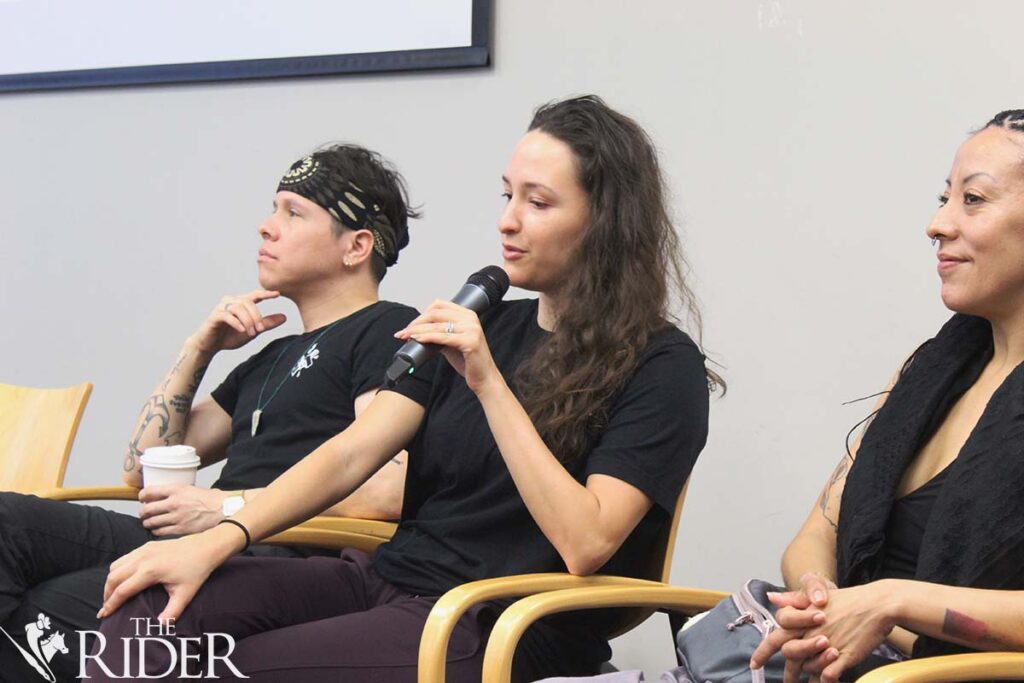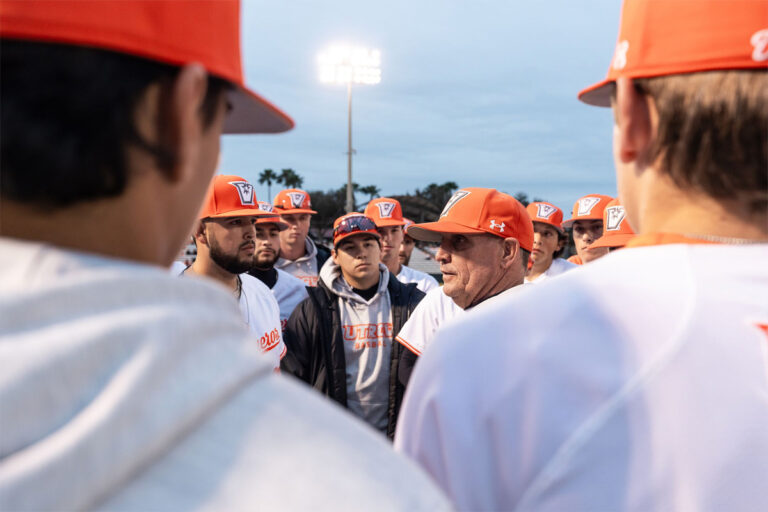Ballet Nepantla shares its journey of identity and dance

Ballet Nepantla’s founder Andrea Guajardo told the UTRGV community about her journey from dancing in the Rio Grande Valley to creating her own company in New York City.
Hosted by the UTRGV Center for Mexican American Studies, the “Culturally Sustaining Pedagogy through Meaningful Movement” panel discussion took place Oct. 21 in the Education Complex Borderlands Room on the Edinburg campus.
Guajardo said she began her ballet and folklórico journey at Dancentre in Edinburg, her hometown.
“I went to school where … like 90% of us were Mexican American,” Guajardo said. “I was taller and whiter than everybody around me, and I didn’t really speak Spanish. … I was always, you know, la güera, the ballet dancer. … I made it my goal at a pretty early age to get out of the Valley, move to New York City and be a professional dancer.”
At 17, she moved to New York on a scholarship where she obtained her Bachelor of Fine Arts degree in dance at Fordham University in 2013.
After graduating, Guajardo performed with MOMIX, a dance company based in Washington, D.C., until 2017.
She said during the six years living in New York, she was always questioned about her identity.
“I had developed this kind of responsibility over the course of time to educate these people,” Guajardo said. “You know, Mexicans come in all different shapes, all different sizes, all different colors. There are Jewish Mexicans. There are red-haired Mexicans, blond-haired, blue-eyed Mexicans. There are Black Mexicans.”
Raquel Pérez, the program manager for the Center for Mexican American Studies, said a big area of culturally sustaining pedagogy is understanding who we are.
“I found the plática very interesting because there was a lot of areas that I could relate to as well as a Mexican American living here in the borders,” Pérez told the panel. “You feel like no eres ni de aquí, ni de allá, right? I had the opportunity to go to Mexico every Friday and Saturday and speak to my abuelitos and I speak Spanish and I’m grateful for that. But now, as generations are passing, I noticed that some of my nephews and nieces can’t have that.”
Guajardo’s passion inspired her to found Ballet Nepantla in January 2017 and now serves as a dancer, choreographer and artistic director.
“Founding Ballet Nepantla was the first time that I was ever able to bridge the gaps between my identities as a ballet dancer and a Mexican American, and it’s been through dance,” she said. “And for the first time, I think, like, who I am has made sense to me.”
Guajardo said Ballet Nepantla is a way for her to connect with her Mexican American roots and share it with others.
“At the end of the day, art is expression and identity, and it all starts from somewhere,” she said. “So, what we’re doing at Ballet Nepantla is fusing all of our cultural identities and expressions to create something very new and something that people have never seen.”
Martín Rodríguez, co-founder and resident choreographer of Ballet Nepantla, began his dance journey at age 9 when he joined the Academia de Danza Imagen in Guadalajara, Jalisco, Mexico.
At 15, Rodríguez emigrated with his family to Los Angeles, where he searched for a dance community to feel close to his identity.
“I wanted to feel like I was belonging somewhere because … [I was in a] new country, new language, new everything,” he said. “And I feel like this is part of us in general as humans to search for that community.”
In 2016, he moved to New York, where Guajardo told him her idea of opening Ballet Nepantla. He now directs and choreographs for the company.
“I felt a sense that we have to continue pushing and showing who we are … [by] making people connect or reconnect with their backgrounds,” Rodríguez said.
He said Ballet Nepantla wants to capture people’s attention by helping them understand cultural stories and traditions they might not know.
“I think Ballet Nepantla is a company that always tries to push the cultural background [and] our identity,” Rodríguez said. “I feel like that’s a big part of the job … to let people know that you can explore your own ways with your own experiences and keep growing as a community.”
Argelia Arreola, a dancer and choreographer for Ballet Nepantla, said she felt homesick after moving from Mexico to New York.
“I never did folklórico in Mexico until I moved to New York,” Arreola said. “I really wanted to know more about my culture and I knew some stuff, but I didn’t know a lot. So when I moved to New York, I started doing research with people in the community.”
She said their stories help them share their roots.
“We come from three completely different experiences,” Arreola said in Spanish. “Me, coming from [Mexico] and being in a foreign country, or like Andrea who was finding her Mexican roots and Martín who has always had that connection with Mexico.”
Joy Esquierdo, vice provost for the Office of Bilingual Integration, thanked the speakers for sharing their stories.
“What you share is so deep and so important for our students to understand,” Esquierdo said. “… That journey is so beautiful and it takes bravery to go through that and share it with others and then use it to your career, infuse it into the coalition with the goal of helping others also explore their journey and explore their identities.”





